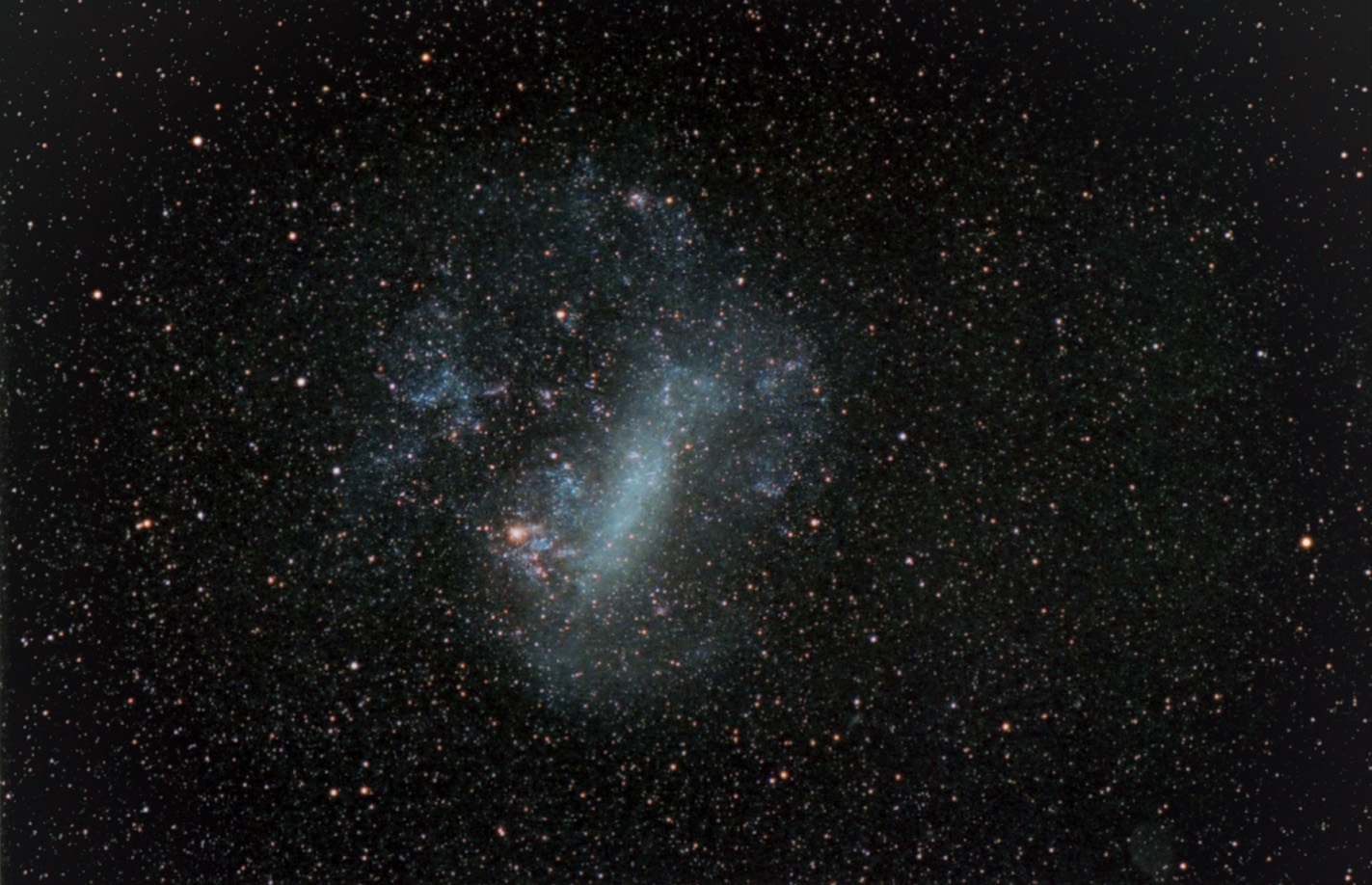
The Large Magellanic Cloud is an irregular dwarf galaxy that is gravitationally bound as a satellite to our Milky Way Galaxy. The Large Magellanic Cloud, or LMC, is part of the Local Group that includes the Andromeda Galaxy, M33, M110, M32, and the Small Magellanic Cloud. The LMC is about 150,000 light-years away. This nearby galaxy is visible to the naked eye. It is located close to the south celestial pole, and is thus only visible from the sourthern hemisphere. This region of the sky also boasts one of the finest globular star clusters, i.e., the magnificent 47 Tucanae globular cluster located 2-1/2 degrees west of the Small Magellanic Cloud.
The LMC has an enormous emission nebula in it known as the Tarantula Nebula. If the Tarantula Nebula was located in our own galaxy and was as close to us as the Orion Nebula, it would cover a significant portion of the night sky. Even though this nebula is located 150,000 light-years away in the LMC, it is a spectacular object to view through an amateur telescope. The LMC also contains supergiant stars, globular clusters, nebulae, open star clusters, and is a treasure trove of splendid objects for a telescope. In 1987, a supernova exploded in the LMC, and provided an excellent opportunity to study that aspect of stellar evolution with modern telescopic equipment.
The LMC was named in honor of Ferdinand Magellan who circumnavigated the globe in the years 1519 to 1522. The LMC is located at the border of the constellations Dorado and Mensa. Consequently, the object is a bit unusual in that portions of the LMC fall within two constellations.
This photo was taken at the Las Campanas Observatory in Chile, with a Nikon F2 camera using a 105mm Nikon lens at f2.5. The camera was mounted piggyback on a Takahashi FS-78 telescope carried on a Takahashi EM-10 Temma Jr. mount that was guided using an SBIG ST-8XE CCD. The film was Kodak PJM multispeed color negative film, and the exposure time was 27 minutes.
LMC
Constellation: Dorado & Mensa
RA: 05h 23m 34.6s Dec: -69d 45' 22" (J2000)
October 10, 2013
Image by Sid Leach
Las Campanas Observatory, Chile
Recent Images.
Complete list of images.
Description of equipment used to acquire images.
Home
Feedback and comments should go to Sid